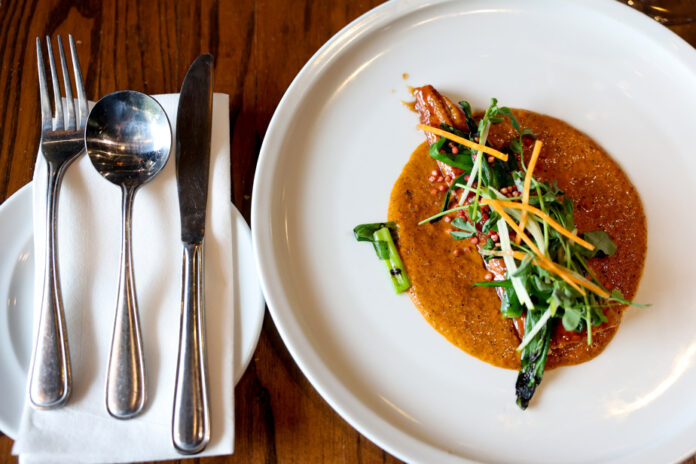“My plate of lamb was $54, that really didn’t make sense anymore. Aware that the price of certain dishes on his menu could put off customers, restaurateur Matthieu Bonneau cut the pear in half by reducing its portions… and its prices.
“It often happened that I put on the table bills of $ 200 for two, underlines Mr. Bonneau, owner of the Coup Monté, which has two establishments in Lanaudière. Now it’s more around $150,” adds the man whose restaurants operate on a “bring your own wine” formula.
Following the example of manufacturers who have reduced the size of boxes of cookies and cereals in the supermarket, now many restaurateurs are revising downwards the size of the portions contained on the plates in order to make ends meet and attract customers, declining in many establishments.
This is the case of Matthieu Bonneau, who recorded a 15% decrease in sales compared to the same period last year.
The restaurateur’s gesture should be taken into consideration by many, said Robert Dion, founder and publisher of the online magazine HRImag. “The biggest problem in the industry is that there is a lot of guesswork, little precise assessment. We rely on the price of the neighbor, we rely on “the approximate”.
This option – which Mr. Dion equates to reduflation – allows for a better evaluation of the costs, he believes. Right now, “we’re misjudging” the price of a plate, he observes.
“Prices are changing rapidly. It is very, very, very difficult to stay close to its cost price. »
Mr. Dion also refers to the many closures currently affecting the restaurant industry. Recently, two well-known restaurants, Maison publique on the Plateau Mont-Royal and Chez Sophie in Griffintown, announced that they were going out of business. Personal reasons and the high demands of the job notably motivated the decision of the owners. A few weeks ago Juliet
Another restaurateur, Nathalie Côté, co-owner of La Brasserie Bernard and Stella Pizzeria, reflects on what she will need to put in place with her team “to arrive”. “It’s a very big issue right now,” she says. The idea of reducing the size of plates to prevent prices from skyrocketing is also among the options on the table.
“It’s one tool among many others,” says Martin Vézina, vice-president of public affairs at the Association restauration Québec (ARQ). It depends on the vision that the consumer will have. Customers need to feel like they are getting their money’s worth. »
“I’m not sure customers are going to complain that much if there’s less on the plate because we’re paying more and more attention to our health, our figure and our eating habits, wrote Robert Dion recently, in a post published on the HRImag website. Right now, the customer expects a better price, not more on the plate. Especially since the price increase leads to a proportional increase in the tip, which has the effect of making the bill impressive. »
In Matthieu Bonneau’s restaurants, the new formula implemented about two months ago is working well. According to him, customers who get up from the table are satisfied. “People have run out of money and they are no longer hungry,” he sums up.
In addition, Mr. Dion says that the increases on the menus would have been less brutal if they had been made gradually. “A restaurant owner recently told me that he hadn’t raised his prices for three years, but that he had no choice but to do so today,” he wrote in his post. Probably that if he had increased his prices gradually, by being more managerial and without fear of displeasing his customers, he would have ultimately imposed a smaller increase and he would possibly have realized sooner that there is a cost attached to each step. »
“If we had increased the prices when it was time, he adds in an interview, it might be less dramatic. We should have started ten years ago. »















